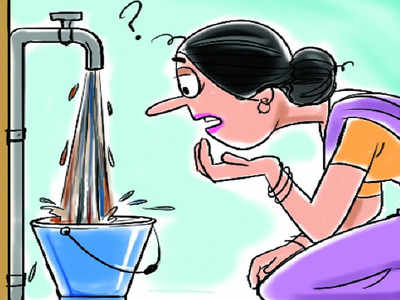The Times of India 25.07.2012
Pune now has water for 100 days; rain low in catchment areas
PUNE: The city has water to tide over the next three and a half months.
The collective water storage in the reservoirs of the four dams that
supply water to Pune city reached 5.23 TMC on Tuesday evening.
In the last 24 hours, the water storage went up by 0.29 TMC as the intensity of the monsoon remained low in the catchment areas.
Among the four dams in the Khadakwasla basin, Temghar received the
highest rainfall of 21 mm, Varasgaon got 12 mm, Panshet recorded 11 mm,
while Khadakwasla received only 1mm rainfall on Tuesday.
S N Bolbhat, executive engineer of Khadakwasla irrigation division,
said though the 5.23 TMC water can meet the city’s needs for the next
three and a half months, Puneites must use water sparingly as dams hold
only 17.95% of the total capacity of 29.14 TMC.
Bolbhat said the
catchment areas require at least a couple of long spells of rain to
increase storage. The only good spell of rain was received last week
since the arrival of the monsoon.
“As per the estimates, the
catchment areas of Temghar, Panshet and Varasgaon receive more than
1,500 mm rainfall during monsoon. However, in the current season none of
these dams have registered more than 750 mm rainfall since June.
Varasgaon has received the highest rainfall of 732 mm followed by
Temghar 728 mm and Panshet 673 mm.”
The water level in Pavana
dam that supplies water to Pimpri Chinchwad looked better. Water in the
reservoir had reached 2.74 TMC mark on Tuesday. The catchment area has
so far received 1,064 mm rainfall, the highest among all the dams in
Pune district. This water storage will meet the requirement of Pimpri
Chinchwad for the next three months.
Officials at the irrigation
department said that scanty rainfall was registered in the catchment
areas of almost all dams in Pune district. The water storages in these
dams have remained low owing to scanty rains.
As many as five
dams located near Pune including Pimplegaon-Joge, Ghod, Visapur, Nazare
and Ujani had zero live water storage on Tuesday. Four other dams –
Manikdoh, Yedgaon, Waduj and Vir – had water storage below 10% of their
capacities.

